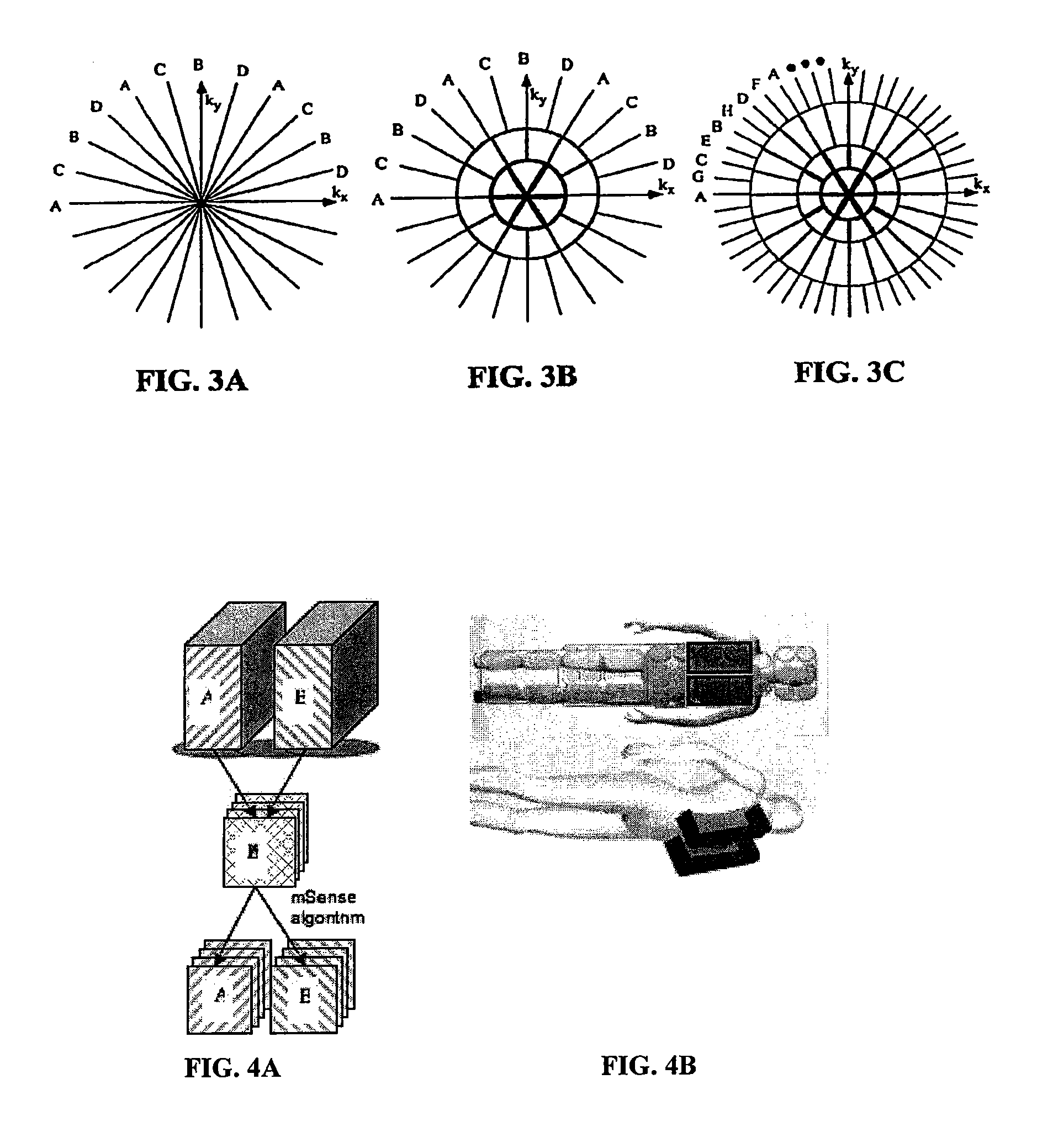Rapid 3-dimensional bilateral breast MR imaging
a breast mr imaging and rapid technology, applied in the field of rapid, bilateral projection reconstruction methods, can solve the problems of poor image quality, affecting the diagnosis of breast cancer, and not being as accurate, and achieve the effect of rapid detection of cancer
- Summary
- Abstract
- Description
- Claims
- Application Information
AI Technical Summary
Benefits of technology
Problems solved by technology
Method used
Image
Examples
example 1
[0101]Using the methods described herein, fifty-four (54) bilateral exams were performed on women with breast abnormalities, all with excellent image quality. For each case, 64 high-resolution slices (0.47×0.47 mm / pixel) and 25 temporal phases (5 baseline and 20 post-contrast) were reconstructed. The scan repetition time was set at 9.8 ms in this study in order to be compatible with a previous breast imaging study. The minimum TR for the sequence, at the same bandwidth, was actually 8.1 milliseconds, which provided an effective temporal resolution of 12.4 seconds. Given sufficient SNR, from, e.g., a high field scanner, the receiver bandwidth could be increased and the TR reduced even further to improve the temporal resolution. All reconstruction, image analysis and viewing were performed on a dual Xeon processor PC at 3.1 GHz.
[0102]Total time for each volunteer to be in the scanner was ˜25 minutes, including patient set-up. FIGS. 6A-6B show a representative case including post-contr...
example 2
[0108]In light of the foregoing findings that rapid radial dynamic contrast enhanced (DCE) MR breast imaging provides high spatial resolution for architectural assessment, as well as high temporal resolution for better characterization of the kinetic response, lesion characterization was correlated with histopathologic findings to determine the diagnostic performance. The kinetic assessment of breast tumors using the signal enhancement ratio (SER) (Li et al., Magn. Reson. Med, 58:572-581 (2007)) has been shown to be a predictor of malignant disease, while being independent of the T1 relaxation time and image intensity scaling. Accordingly, in the present example, DCE-MR images of the breasts were acquired using an undersampled radial trajectory and the kinetic response was assessed using SER.
[0109]Methods: One hundred twenty six (126) subjects with palpable or mammographically-visible suspicious findings were recruited and granted IRB approval. From this number, 94 had subsequent pa...
PUM
 Login to View More
Login to View More Abstract
Description
Claims
Application Information
 Login to View More
Login to View More - R&D
- Intellectual Property
- Life Sciences
- Materials
- Tech Scout
- Unparalleled Data Quality
- Higher Quality Content
- 60% Fewer Hallucinations
Browse by: Latest US Patents, China's latest patents, Technical Efficacy Thesaurus, Application Domain, Technology Topic, Popular Technical Reports.
© 2025 PatSnap. All rights reserved.Legal|Privacy policy|Modern Slavery Act Transparency Statement|Sitemap|About US| Contact US: help@patsnap.com



